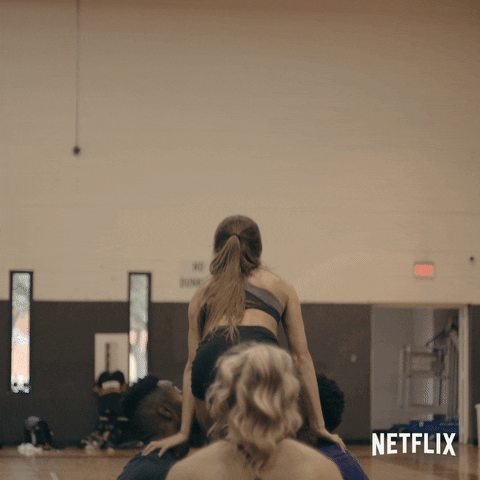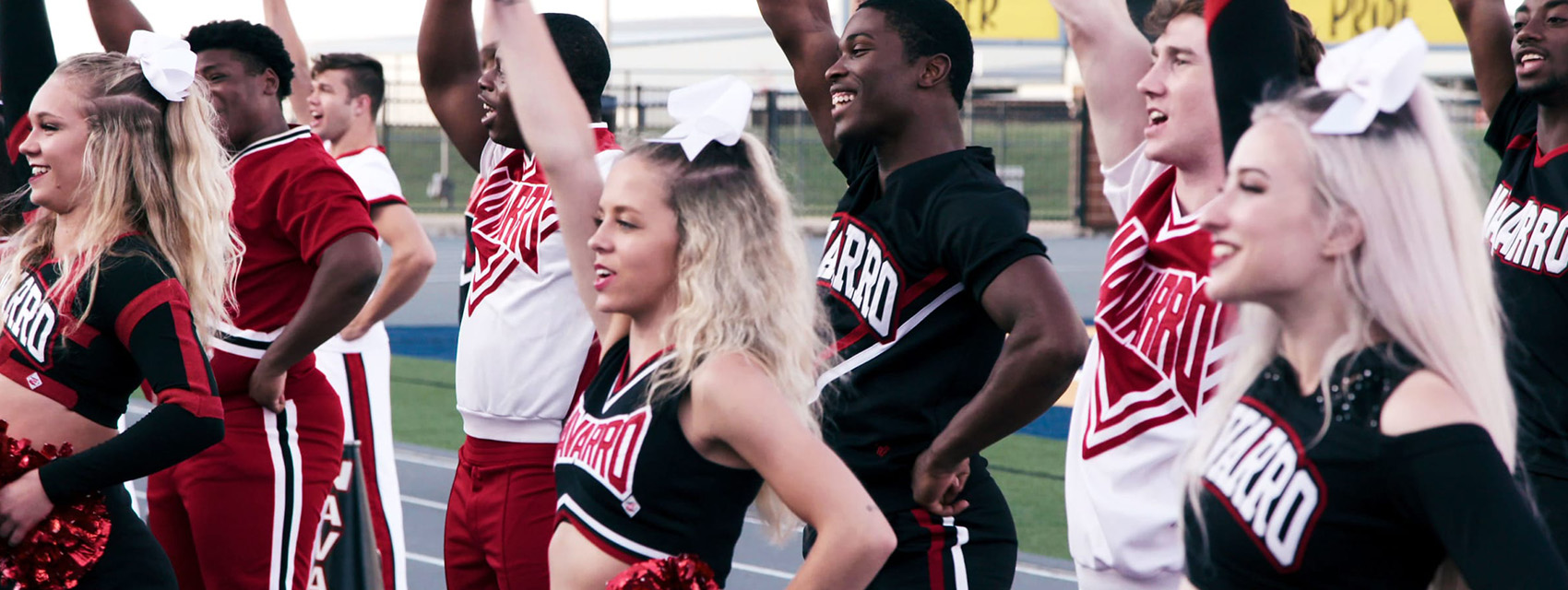How Netflix’s “Cheer” Is Opening Eyes On Concussion
The flips, jumps & leaps are impressive but come with a cost...
Netflix's “Cheer” is truly changing the view of cheerleading by showing us the extremes that the Navarro College cheer team put themselves through on a daily basis to become champions.
The impressive and extravagant stunts, jumps, leaps, and tumbling often push boundaries and can result in injuries from bruises to nose bleeds to broken bones and the topic of this piece, concussion.

One thing we were all wondering while watching these spectacles: How dangerous is a concussion and what are the risks of ignoring it? Most people are aware that concussion is a result of an injury to the head but understanding how the person behaves afterward can be crucial to their healing process.
Neurologist and brain trauma expert Beth McQuiston, M.D., R.D, shines a light on the topic to give viewers and those who are curious, some insight into the world of concussion.
Although anyone can experience concussion it is usually athletes that can suffer, especially like those in “Cheer”, American football players and English Rugby players are some of the most vulnerable to concussion due to higher risk of head injury during their sport.
Women, in general, tend to experience concussion syndrome more often than men, from sports such as hockey and lacrosse, but also just everyday life. As well as having a higher chance of suffering from post-concussion syndrome, which can affect sufferers for up to 3 months afterward and impacts 10-15% of people.

McQuiston says that women are more at risk over men for a few reasons, one is that their brains are wired differently. They have more frequent and smaller connections in the brain compared to men. Other reasons can include certain phases in the menstrual cycle-related to progesterone and how we are physically built, giving us less neck musculature which protects the head and the brain.
“Women don't realize they're at risk of concussions and will usually push through without monitoring or seeking out treatment..." says McQuiston "The best time to educate yourself is before the concussion, not after.“
Knowing the symptoms and signs on concussions are key, they can include:
- Clumsiness
- Dizziness
- Nausea and vomiting
- Increased Headache
- Irritability or other abnormal personality changes
- Stunned appearance
- Coordination or balance issues
- Blurred or double vision
- Light or noise sensitivity
- Memory and concentration problems
- Irregular sleeping patterns
These symptoms can vary depending on who you are, so always make sure you check with a doctor and follow any kind of personalized plan they offer to you that can treat head injuries.
It is possible to keep the risk of everyday concussion to a minimum by following certain steps such as using hand railings on stairs, getting enough sleep, taping down rugs and getting rid of items you could trip over and easily the quote of the last few years, staying hydrated, as dehydration is responsible for balance problems.

If you feel like you have experienced any of these injuries telling yourself it’s nothing, please go and see a doctor just to make sure. The long term impacts of concussion can be dangerous so let’s make sure we spread awareness together.
Next Up, Kappa Kontroll Channels 60’s Groovy Nerd Vibes For Its SS20 Women’s Collection












